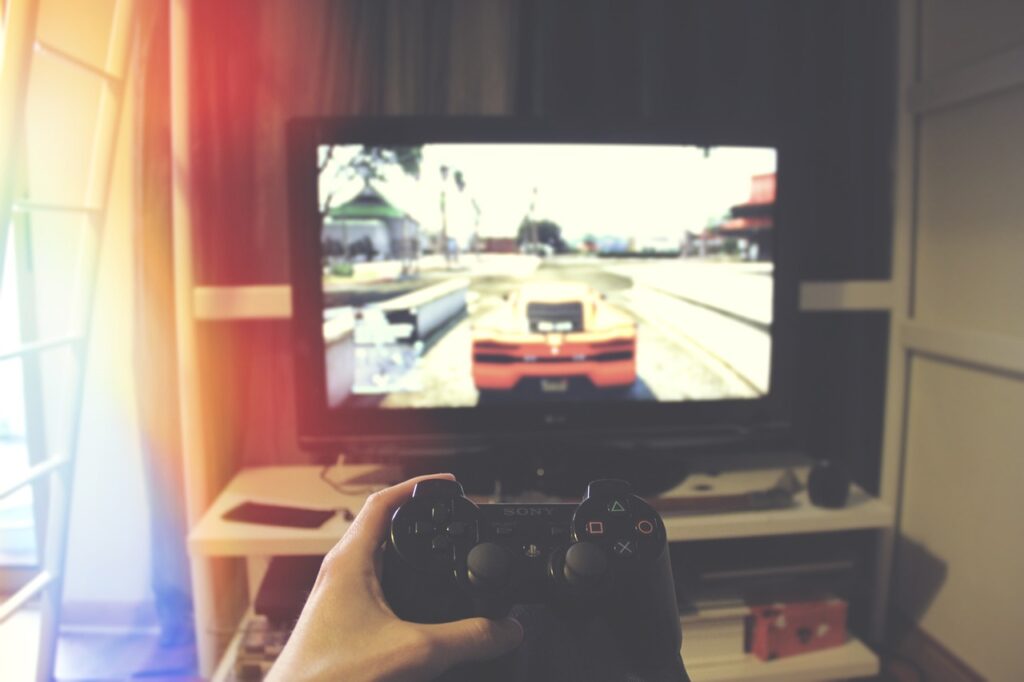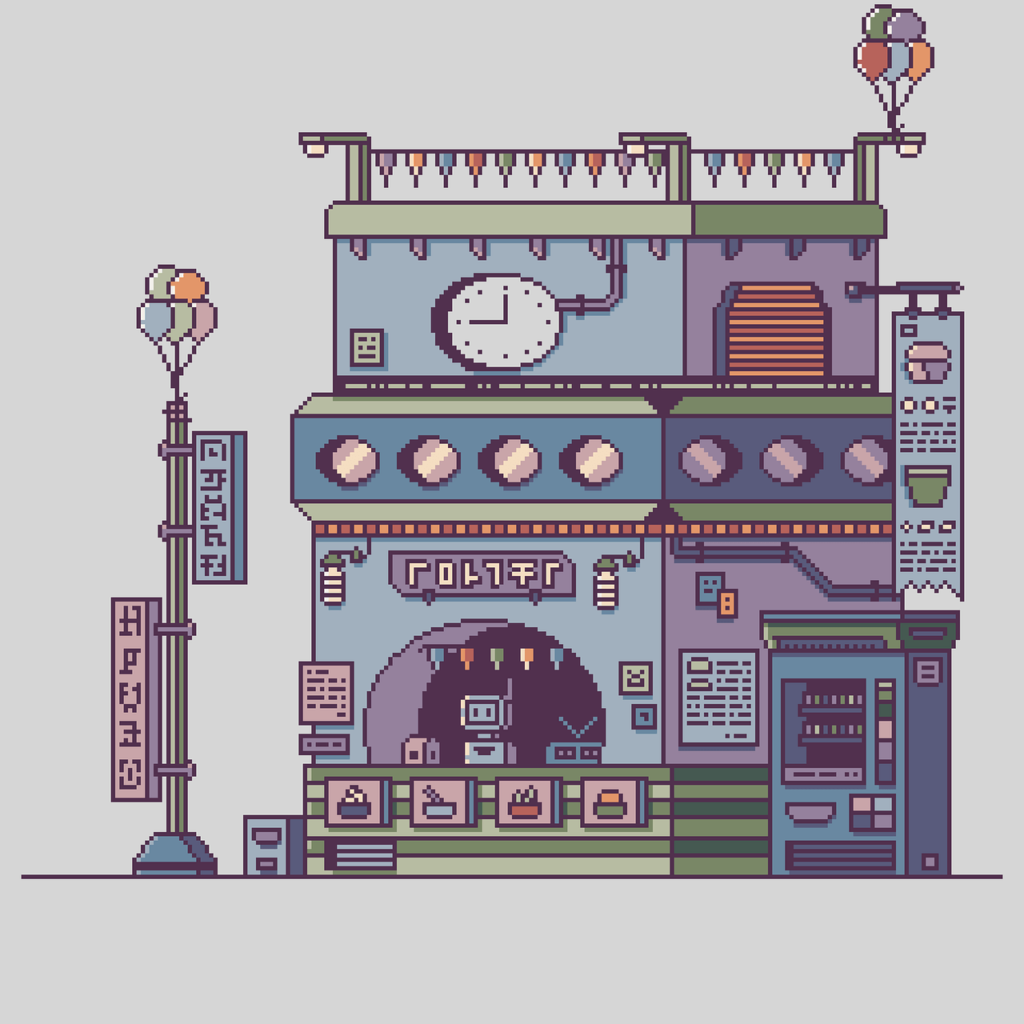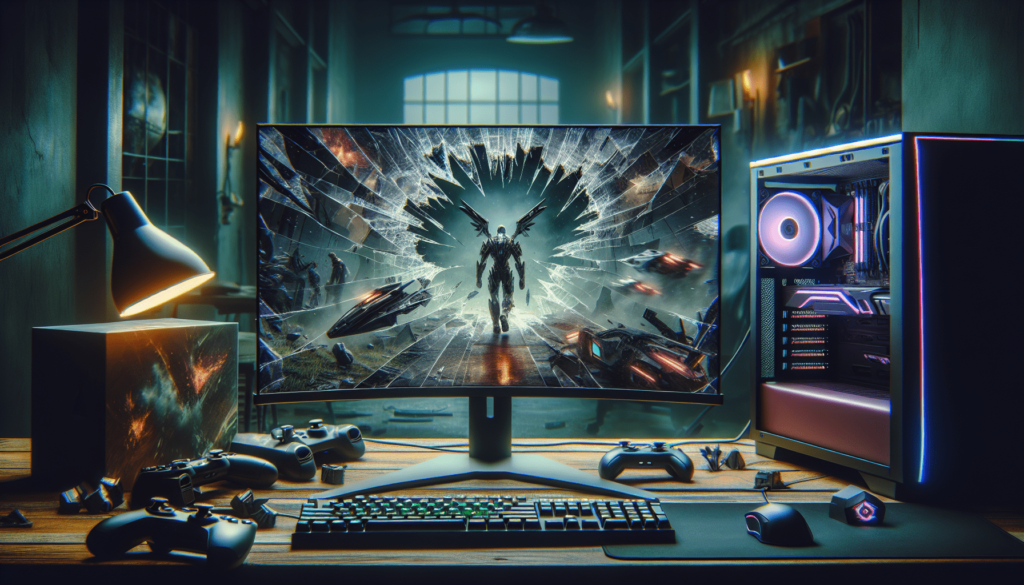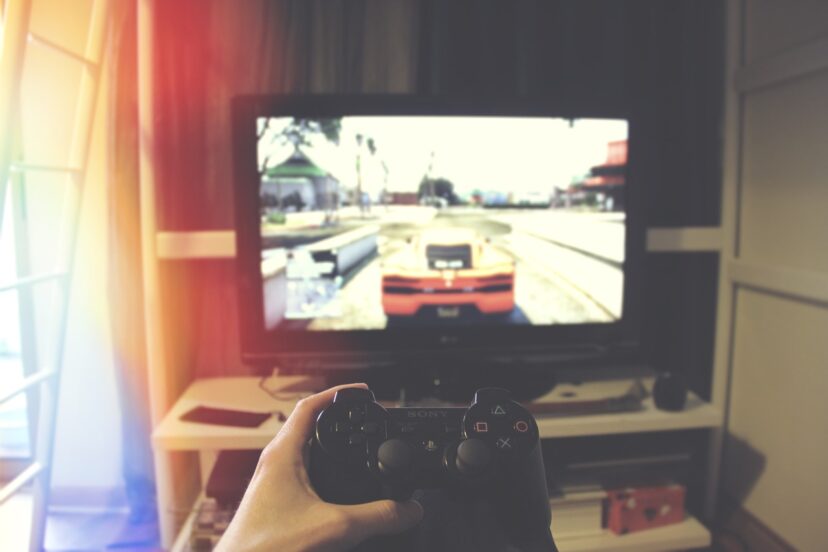How Do I Reduce Screen Tearing While Gaming?
Are you tired of those annoying screen tears while gaming? We know how frustrating it can be when your gaming experience is constantly interrupted by this visual glitch. Well, fear not! In this article, we will explore some effective techniques and tips to help you reduce screen tearing while gaming. So, say goodbye to those pesky tears and get ready to enjoy a smoother and more immersive gaming experience.

Understanding Screen Tearing
What is screen tearing?
Screen tearing is a common phenomenon that occurs when the frames being displayed by the graphics card and the refresh rate of the monitor are out of sync. When this happens, multiple frames are being shown on the screen simultaneously, resulting in a torn or distorted image. This can be quite distracting and detrimental to the gaming experience, as it disrupts the smooth flow of visuals.
Causes of screen tearing
Screen tearing can occur due to a variety of factors. One of the main causes is a mismatch between the refresh rate of the monitor and the frame rate being generated by the graphics card. If the frame rate exceeds the monitor’s refresh rate, screen tearing is likely to occur. Additionally, using older or inefficient cables to connect the monitor can also contribute to screen tearing. High levels of GPU load or a lack of synchronization between the graphics card and the monitor’s refresh rate can further exacerbate the issue.
Effects of screen tearing
Screen tearing can have a negative impact on the gaming experience. The torn image can be visually jarring and break the immersion, making it difficult to fully enjoy the game. It can also introduce input lag, as the torn portions of the screen do not accurately represent the current state of the game. This can lead to delayed reactions and decreased precision during gameplay, which can be especially frustrating in fast-paced competitive games. Therefore, it is important to address screen tearing to ensure a smooth and enjoyable gaming experience.
Monitoring and Adjusting Refresh Rate
Understanding refresh rate
The refresh rate refers to the number of times the screen updates or refreshes in one second. It is measured in Hertz (Hz). A higher refresh rate allows for a smoother and more fluid display, reducing the chances of screen tearing. The standard refresh rate for most monitors is 60Hz, but higher refresh rates such as 144Hz or even 240Hz have become increasingly popular among gamers.
Checking and adjusting refresh rate
To check the refresh rate of your monitor, you can navigate to the display settings on your computer. Within the settings, look for the monitor or display tab and you should find the option to adjust the refresh rate. Here, you can select a higher refresh rate if your monitor supports it. Keep in mind that both your graphics card and monitor must support the desired refresh rate for it to work effectively.
Syncing refresh rate with in-game FPS
To minimize screen tearing, it is essential to synchronize the refresh rate of your monitor with the frame rate produced by your graphics card. This can be done by enabling vertical synchronization, commonly known as VSync. VSync limits the frame rate to match the refresh rate of your monitor, preventing screen tearing. However, enabling VSync can introduce input lag, so it is important to find the right balance between tearing and responsiveness.

Enabling VSync
What is VSync?
VSync, or Vertical Synchronization, is a feature that synchronizes the frame rate of the game with the refresh rate of the monitor. By enabling VSync, the graphics card’s frame rate output is capped to the monitor’s refresh rate. This ensures that each frame is fully displayed and eliminates screen tearing.
Enabling VSync in graphics settings
To enable VSync, open the settings menu of the game you are playing. Look for the graphics or display options, and within that menu, you should find the option to enable VSync. Toggle the setting to “On” or “Enabled.” Keep in mind that VSync may impact performance, so adjusting other graphics settings might be necessary to maintain a smooth gameplay experience.
Using adaptive VSync option
Adaptive VSync is an alternative to traditional VSync that dynamically adjusts its behavior based on the frame rate. When the frame rate exceeds the monitor’s refresh rate, adaptive VSync automatically disables VSync to prevent the introduction of input lag. However, when the frame rate falls below the refresh rate, adaptive VSync re-enables VSync to eliminate screen tearing. This provides a more flexible solution that minimizes input lag while still addressing screen tearing.
Using Freesync or G-Sync
What are Freesync and G-Sync?
Freesync and G-Sync are technologies designed to enhance the gaming experience by eliminating screen tearing and improving overall visual quality. Freesync is developed by AMD, while G-Sync is developed by NVIDIA. Both technologies work by dynamically adjusting the monitor’s refresh rate to match the frame rate produced by the graphics card.
Checking compatibility and enabling
To take advantage of Freesync or G-Sync, you need a compatible graphics card and monitor. Freesync requires an AMD Radeon graphics card, while G-Sync is compatible with NVIDIA GeForce graphics cards. Additionally, the monitor must support the respective technology. Once you have verified compatibility, enable Freesync or G-Sync through the graphics card’s control panel or the monitor’s settings menu to achieve tear-free gaming.
Benefits of using Freesync or G-Sync
Freesync and G-Sync provide a significant improvement to the gaming experience. By dynamically adjusting the refresh rate, these technologies eliminate screen tearing without introducing input lag. This results in a smooth and seamless visual experience, allowing for more immersive gameplay. With tear-free gaming, you can focus on the action without any distracting visual artifacts, enhancing your performance and enjoyment.

Optimizing In-Game Graphics Settings
Lowering graphics settings
One way to reduce screen tearing is by lowering the graphics settings in the game you are playing. High graphics settings can put a strain on your graphics card and cause the frame rate to exceed the monitor’s refresh rate, leading to screen tearing. By lowering settings such as texture quality, shadow quality, or post-processing effects, you can reduce the demand on your GPU and achieve a smoother gaming experience.
Disabling unnecessary effects
In addition to lowering the overall graphics settings, disabling unnecessary visual effects can also help reduce screen tearing. Effects such as motion blur, depth of field, or ambient occlusion are visually appealing but can be resource-intensive. Disabling these effects can alleviate the burden on your graphics card and minimize the chances of screen tearing occurring.
Reducing anti-aliasing
Anti-aliasing is a technique used to combat jagged edges on graphics by smoothing them out. While anti-aliasing can enhance the visual quality, it can also increase the workload on your graphics card. By reducing the anti-aliasing settings or disabling it altogether, you can reduce the strain on your GPU, potentially improving the frame rate and minimizing screen tearing.
Updating Graphics Drivers
Importance of up-to-date drivers
Keeping your graphics drivers up to date is crucial for optimal gaming performance. Graphics card manufacturers frequently release driver updates that include performance optimizations and bug fixes. These updates can address compatibility issues, improve stability, and enhance the overall gaming experience. By updating your drivers, you ensure that your graphics card is operating at its best and potentially resolving any issues contributing to screen tearing.
Checking and updating graphics drivers
To check if your graphics drivers are up to date, visit the website of your graphics card manufacturer. NVIDIA provides the GeForce Experience software, while AMD offers the Radeon Software. These programs can automatically scan your system, detect outdated drivers, and prompt you to update them. Alternatively, you can manually download the latest drivers from the manufacturer’s website and install them to ensure you have the most recent version.
Using automatic driver update tools
If manually updating drivers seems daunting, there are third-party tools available that can automate the process for you. These tools scan your system for outdated drivers and provide a one-click solution to update them. However, exercise caution when using such tools and ensure that they are from reputable sources to avoid potential security risks.

Managing GPU and CPU Load
Monitoring and optimizing GPU load
Monitoring your GPU load while gaming can help you identify if it is being overly taxed, potentially leading to screen tearing. There are various software tools available, such as MSI Afterburner or GPU-Z, that allow you to monitor GPU usage. By observing the load percentage, you can make informed decisions about optimizing graphics settings or reducing the workload on your GPU.
Balancing CPU load
While screen tearing is primarily associated with the GPU and monitor, an unbalanced CPU load can also affect gameplay smoothness. In some cases, a CPU bottleneck can result in uneven frame delivery, leading to screen tearing. To balance the CPU load, close any unnecessary background applications or processes that might be occupying system resources. This can help ensure that the CPU can adequately handle the demands of the game.
Overclocking or upgrading hardware
If you consistently experience screen tearing despite optimizing settings and managing loads, overclocking your GPU or upgrading your hardware might be worth considering. Overclocking can increase the performance of your GPU, potentially reducing screen tearing. However, proceed with caution when overclocking, as it can increase power consumption and generate more heat. Alternatively, upgrading to a more powerful graphics card or CPU can provide a significant boost in performance, mitigating screen tearing issues.
Using a DisplayPort Cable
Advantages of DisplayPort over HDMI or VGA
When it comes to connecting your monitor to your graphics card, using a DisplayPort cable offers several advantages over HDMI or VGA. DisplayPort supports higher refresh rates and resolutions, making it ideal for gaming. It also provides better bandwidth, allowing for faster data transmission between the graphics card and monitor. Additionally, DisplayPort cables have a locking mechanism, ensuring a secure connection and minimizing the chances of accidental disconnections.
Checking for DisplayPort support
Before purchasing a DisplayPort cable, ensure that both your graphics card and monitor have DisplayPort connectors. Newer graphics cards and high-end gaming monitors typically support DisplayPort. If your hardware doesn’t have a DisplayPort connector, HDMI or VGA can still be used, but keep in mind that they may not provide the same level of performance and compatibility as DisplayPort.
Replacing cables for better connectivity
If you are currently using an HDMI or VGA cable and experiencing screen tearing, it may be beneficial to replace the cable with a DisplayPort cable. A poor-quality or damaged cable can hinder the transmission of data between the graphics card and the monitor, potentially contributing to screen tearing. By using a high-quality DisplayPort cable, you can ensure optimal connectivity and potentially reduce or eliminate screen tearing.
Closing Unnecessary Background Programs
Identifying resource-intensive programs
When playing games, it is essential to close any unnecessary background programs that may be consuming system resources. Resource-intensive programs, such as antivirus software, media players, or web browsers running in the background, can increase the load on your CPU and RAM. This additional load can affect the smoothness of gameplay and contribute to screen tearing.
Closing unnecessary applications and processes
To free up system resources and minimize potential interference, close any unnecessary applications and processes before starting a gaming session. This can be done through the task manager on Windows or the activity monitor on macOS. By terminating non-essential programs, you provide your game with priority access to system resources, reducing the likelihood of screen tearing.
Using game mode or performance settings
Many modern monitors and computers offer a game mode or performance mode option. These modes optimize the display and system settings for gaming, prioritizing performance and minimizing input lag. Enabling game mode can help reduce screen tearing by allocating more resources to your game, ensuring a smoother gaming experience. Consult your monitor’s manual or refer to the settings menu to find and enable the game mode feature.
Investing in a Gaming Monitor
Choosing a monitor with faster response time
Investing in a gaming monitor with a faster response time can significantly reduce screen tearing. Response time refers to the speed at which pixels can change from one color to another. Monitors with a lower response time, typically measured in milliseconds (ms), can display images faster and more accurately. Aim for a monitor with a response time of 5ms or lower to ensure minimal motion blur and screen tearing.
Considering adaptive sync technology
Adaptive sync technologies, such as Freesync and G-Sync, are worth considering when shopping for a gaming monitor. As mentioned earlier, these technologies synchronize the monitor’s refresh rate with the frame rate outputted by the graphics card, eliminating screen tearing. Investing in a monitor with adaptive sync technology can provide a tear-free gaming experience with minimal input lag.
Exploring high refresh rate options
High refresh rate monitors have become increasingly popular among gamers due to their ability to display more frames per second. While the standard refresh rate is 60Hz, monitors with refresh rates of 144Hz or even 240Hz are now available. By opting for a higher refresh rate monitor, you increase the chance of eliminating screen tearing, as the monitor can keep up with the higher frame rates generated by your graphics card.
In conclusion, screen tearing can significantly impact the gaming experience, but there are various strategies to minimize or eliminate it. By understanding the causes and effects of screen tearing, monitoring and adjusting the refresh rate, enabling VSync or utilizing adaptive sync technologies, optimizing in-game graphics settings, updating graphics drivers, managing GPU and CPU load, using DisplayPort cables, closing unnecessary background programs, and investing in a gaming monitor, you can ensure a tear-free and enjoyable gaming experience. Remember to experiment with these techniques and find the combination that works best for your specific setup to achieve smooth and immersive gameplay.




